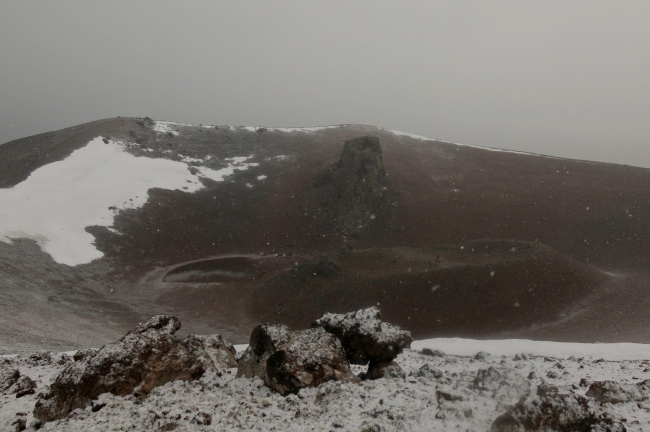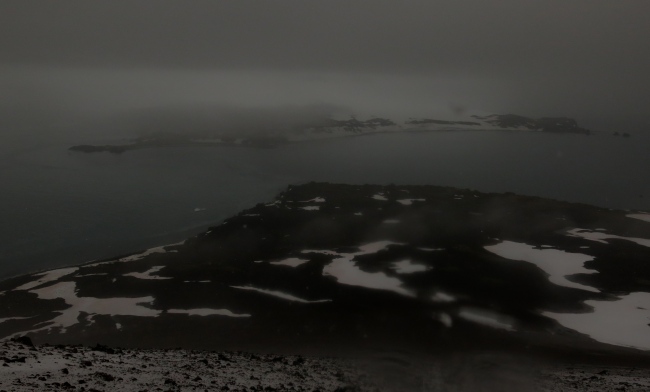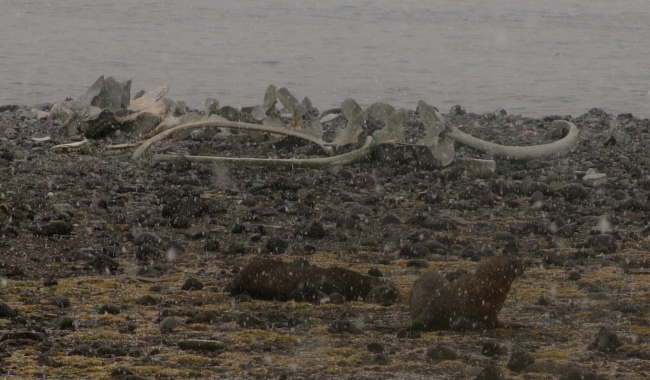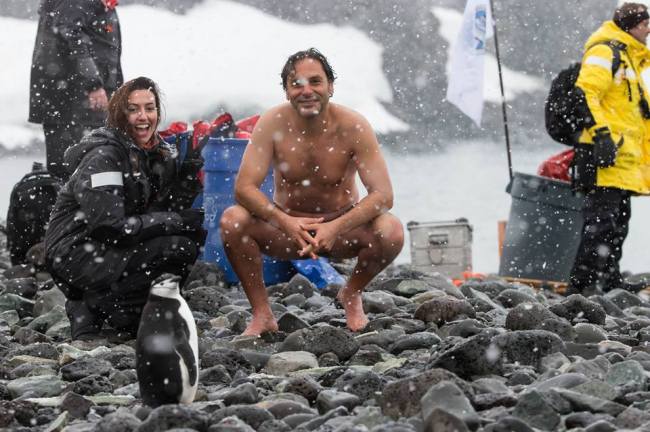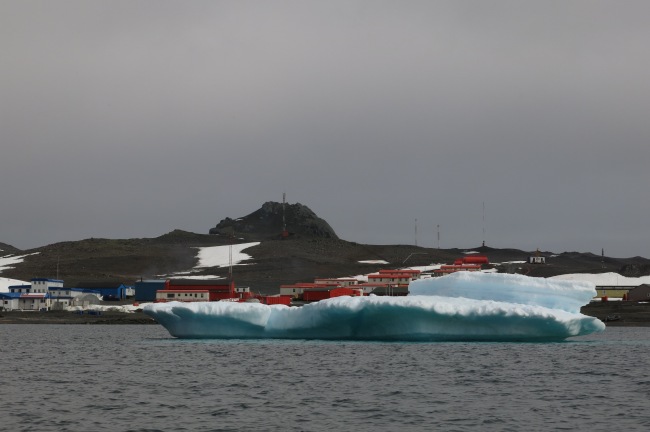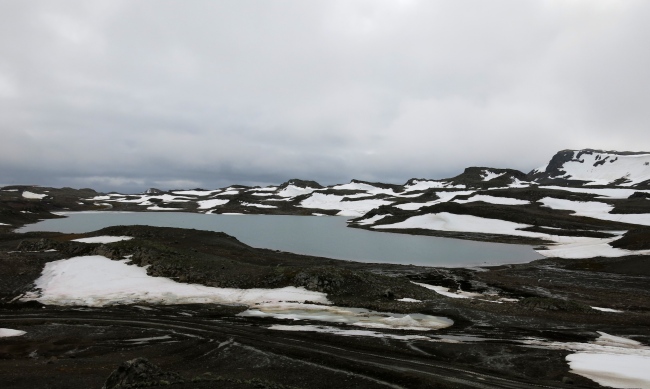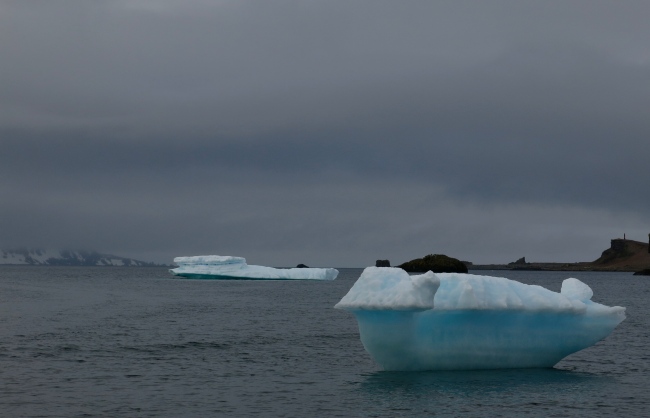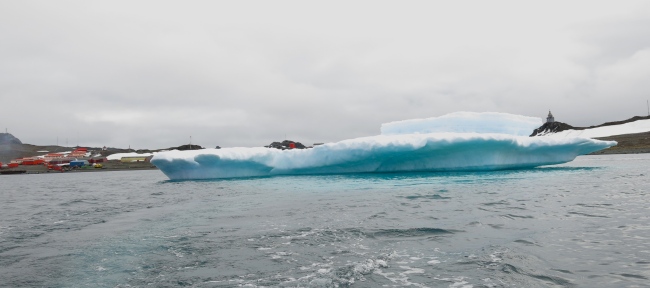Arraival time Penguin Island 6:00 before than breakfast!! ahahhahahaha
Penguin Island is one of the smaller of the South Shetland Island of Antarctica. Was sighted in January 1820 by a British expedition under Edward Bransfield, and so named by him because penguins occupied the shores of the Island.
The island which is ice free and oval shaped, 1.4km (0.87 mi) wide by 1,7 km (1.1 mi) long, lies close off the south coast of the much larger king George Island, and marks the easten side of the entrance to king George Bay. It has a shoreline of low cliffs, with a beach on the north coast providing access.
We were walking around 7:00-7:30 at the morning time and my stomach started to make noises and I began to imagine that this was a huge bar of chocolate cereal with pieces of coconut powder. Ñami!!!!! Ñami!! Ñami!! … Crunchi Crunchi Crunchi!!! :-).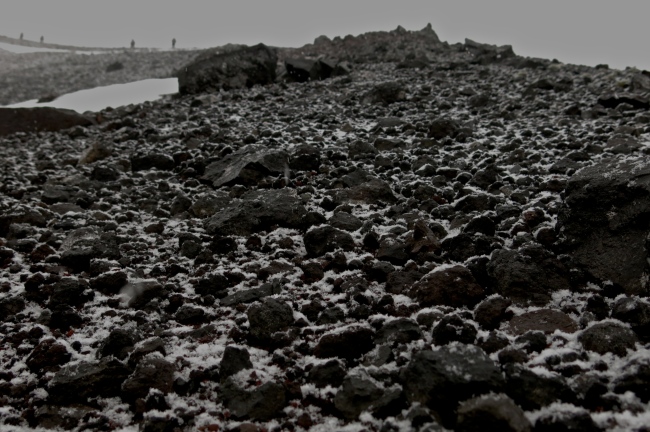
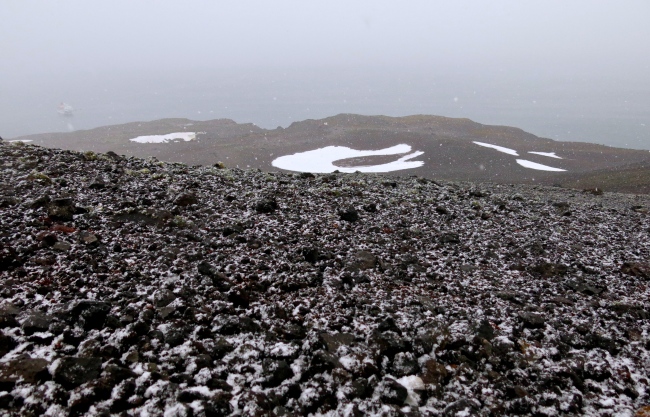
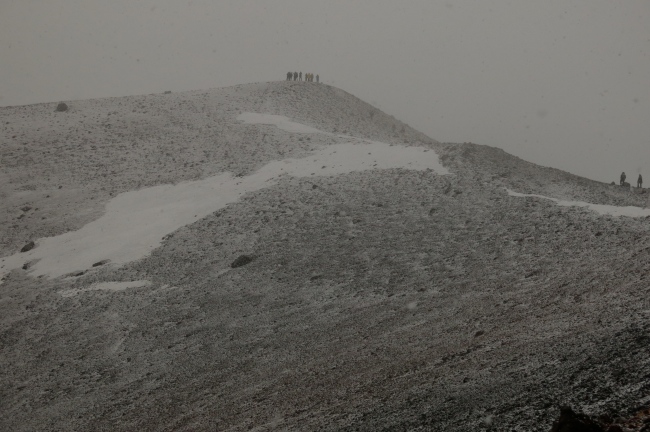
The morphology of the island and unconsolidated nature of the pyroclastic deposits suggest that Penguin Island was active in historical
eruptions about 1850…
We had as well a volcanism lecture on the boat with Dr. Urli Dornsiepen.
Views from the top of the Island.
Here we can see an albino seal. I never saw one before…I found it curious..
These are Antarctic fur seals.
We found near the water a whale skull.
Some kuku people were having a bath in the Antarctic beaches…:-P. Water was maybe 2-3 daggers I’m not sure about that, but pretty cold anyway.
Photo Michael Poliza!!!! <3.
At the afternoon we arrived at Maxwell bay to King Georg Island. The Island was discovered and named by the British explorer William Smith in 1819. It is apron. 95 km long and 25 km wide. Over 90% of the Island is approximately glaciated.
Human Habitation of King George is limited to research stations (almost militaries) belonging to Argentina, Brazil, Chile, China, Ecuador, South Corea,, Perú, Poland, Russia, Uruguay, and The UUEE. Most of this stations are permanently staffed, carrying out research into the areas as diverse as biology, ecology, geology, and paleontology.
We were visiting the Russan station Bellingshausen in Maxwell Bay. In 2004 a Russian Orthodox church, Trinity church, was opened on the island near Russia’s Bellingshausen Station. The Church is one of the southernmost in the world and one of the few permanent structures in Antarctica, is permanently manned by a priest.
Bye bye, Maxwell Bay…
Photos by Dona GB.
…will continue….



